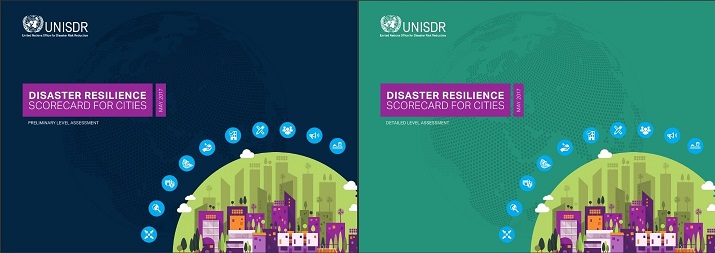Disaster Resilience Scorecard for Cities
United Nations Office for Disaster Risk Reduction with the support of European Commission, IBM, AECOM and other partners and cities participating in the Making Cities Resilient Campaign have updated the Disaster Resilience Scorecard for Cities.
The Scorecard provides a set of assessments that will allow local governments to monitor and review progress and challenges in the implementation of the Sendai Framework for Disaster Risk Reduction: 2015-2030, and assess their disaster resilience. It is structured around UNISDR’s Ten Essentials for Making Cities Resilient.
It offers the potential for scoring at two levels:
• Level 1: Preliminary level, responding to key Sendai Framework targets and indicators, and with some critical sub-questions. This approach is suggested for use in a 1 to 2 day city multi-stakeholder workshop. In total there are 47 questions indicators, each with a 0 – 3 score;
• Level 2: Detailed assessment. This approach is a multi-stakeholder exercise that may take 1 – 4 months and can be a basis for a detailed city resilience action plan. The detailed assessment includes 117 indicator criteria, each with a score of 0 – 5.
Note that the criterion in the detailed assessment may serve as helpful discussion prompts for a preliminary level workshop.
While the Scorecard can be used as a standalone tool, it does require you to consider your city’s hazards and risks. Specifically, the Scorecard prompts you to identify “most probable” and “most severe” risk scenarios for each of your identified city hazards, or for a potential multi-hazard event.
In considering risk, you may find the Quick Risk Estimation tool (QRE) developed by UNISDR and Deloitte helpful.
Link to Preliminary and Detailed Assessments: http://www.unisdr.org/campaign/resilientcities/home/toolkitblkitem/?id=4

